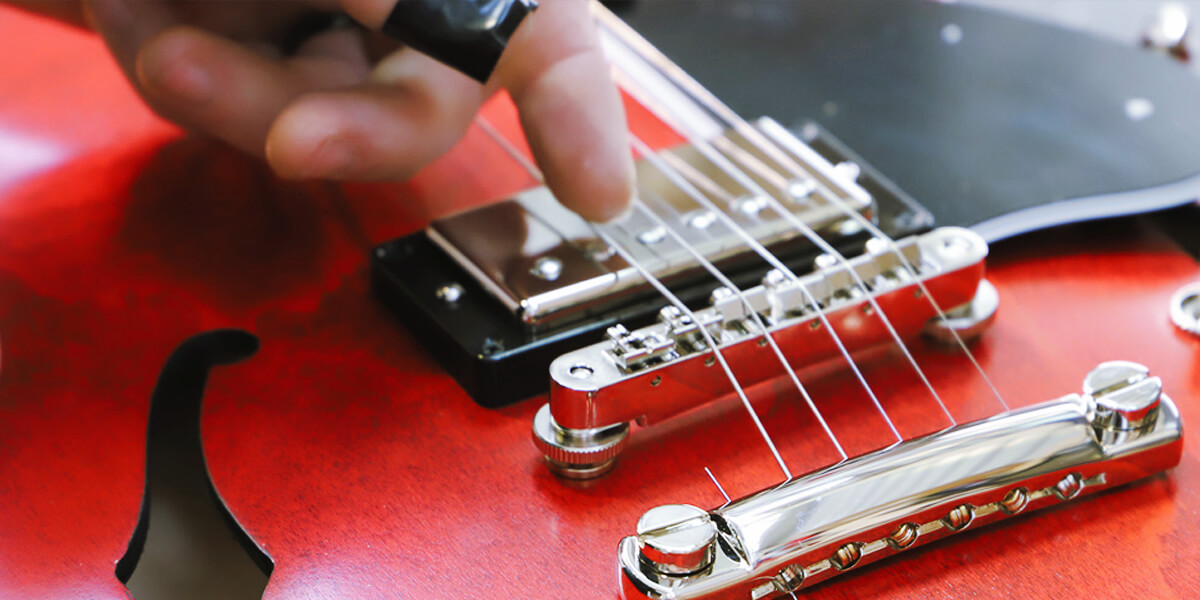How often to change guitar strings? This is a common question among guitarists who are just beginning their exciting journey in this creative endeavor. Over time, strings accumulate dirt, sweat, and oils from your fingers, causing them to lose their brilliance and become dull-sounding. That’s why regularly replacing your guitar strings is critical for ensuring a bright, vibrant tone that enhances your musical experience.
Moreover, worn-out strings can make it challenging to achieve accurate intonation and hinder your playing technique. By understanding the importance of timely string changes, you can unlock the full potential of your instrument and enjoy a consistently bright and lively sound. In this article, I will share with you the factors that influence string lifespan and provide guidance on determining the ideal frequency for changing it.
Factors influencing string lifespan
When it comes to the question of “how long do guitar strings last,” there isn’t a definitive answer as the lifespan varies on several factors:
- Playing Frequency: Regular and intensive playing can lead to faster string wear and loss of brightness.
- Playing Style: Techniques such as bending, sliding, and aggressive strumming can put more stress on the strings, affecting their lifespan.
- String Quality: Higher-quality strings tend to last longer and maintain their tone for an extended period. In contrast, cheaper or lower-quality ones may lose their brightness and intonation more quickly.
- Environmental Conditions: Humidity, temperature fluctuations, and exposure to sweat and oils from your fingers can contribute to corrosion and diminished sound quality.
- Personal Preferences: Some guitarists prefer the bright and crisp sound of brand-new strings and may change them more frequently, while others may enjoy the warmer tones that develop as strings age.
By considering these factors, you can determine the optimal time frame for changing your guitar strings, ensuring that you consistently achieve a bright and vibrant sound.
Signs it’s time to change guitar strings

Here are a few signs that once you notice, you’ll always know when to change guitar strings:
- Loss of Tone: Old strings can lose their brightness, clarity, and sustain, resulting in a dull or muted sound.
- Intonation and Tuning Issues: Worn-out strings can cause problems with intonation, leading to the guitar not holding its tuning properly.
- Physical Wear: Signs of physical damage to the strings, such as rust, corrosion, unraveling, or visible breakage, indicate that it’s time for a string replacement.
- Playability and Feel: Worn strings can feel rough, sticky, or lack the desired response, making it difficult to execute technical maneuvers and impacting overall playability.
Recognizing these signs is critical for determining when to change your guitar strings.
Frequency of string changes
Here are some general guidelines on how often you need to restring the guitar based on various scenarios, such as:
- Regular Players: For guitarists who practice for several hours a day or perform regularly, it is recommended to replace guitar strings every 1-3 months. However, the frequency may vary depending on personal preferences and factors mentioned earlier.
- Occasional Players: Players who practice less frequently, such as once or twice a week, can extend the lifespan of their strings to around 3-6 months. Since the strings are not subjected to as much continuous playing, they tend to last longer.
- Professional Musicians: They often have a higher string replacement frequency due to the demands of touring, recording, and frequent performances. Many professionals prefer to change strings on the guitar before every major show or recording session to ensure optimal sound quality.
- Environmental Conditions: Environmental factors such as humidity, temperature, and sweat can significantly impact the lifespan of guitar strings. In high-humidity environments, strings may corrode and lose their brightness more quickly. Similarly, exposure to extreme temperatures can cause strings to become brittle and break more easily.
String care and maintenance

By implementing the following tips for string care and maintenance, you can extend the lifespan of your guitar strings and ensure consistent tone and playability:
- Wipe the strings after each playing session to remove sweat and dirt. This simple practice helps prevent the buildup of grime, which can degrade the strings’ tone and lifespan.
- Consider using lubricants or string-cleaning products specifically designed to reduce friction and prolong string life.
- Store your guitar in a controlled environment, away from extreme temperatures, humidity, and direct sunlight. Drastic changes in temperature and humidity can cause strings to deteriorate more quickly.
- Trim your fingernails and keep them smooth to prevent unnecessary wear on the strings. Sharp or jagged nails can cause damage and accelerate string wear.
FAQ
How do I dispose of old guitar strings?
Of course, you can just throw them away, but I recommend recycling them. Check with local recycling centers to see if they accept metal items like guitar strings. Some organizations, such as the D’Addario Playback Recycling Program, offer specific recycling initiatives for strings.
Can I reuse old strings in an emergency situation?
While it is technically possible to reuse old strings in an emergency, it’s not recommended. Old strings lose their tonal quality, stretch and become more prone to breakage. In addition, reusing them may compromise sound quality, intonation, and tuning stability.
Are there differences in string lifespan between acoustic and electric guitars?
Yes, there can be differences. Acoustic guitars exert more tension on strings, leading to faster wear. The vibrations of the acoustic guitar body also contribute to degradation. Electric guitars generally have lighter string tension and experience less wear. However, factors like playing style and string quality still play significant roles.











